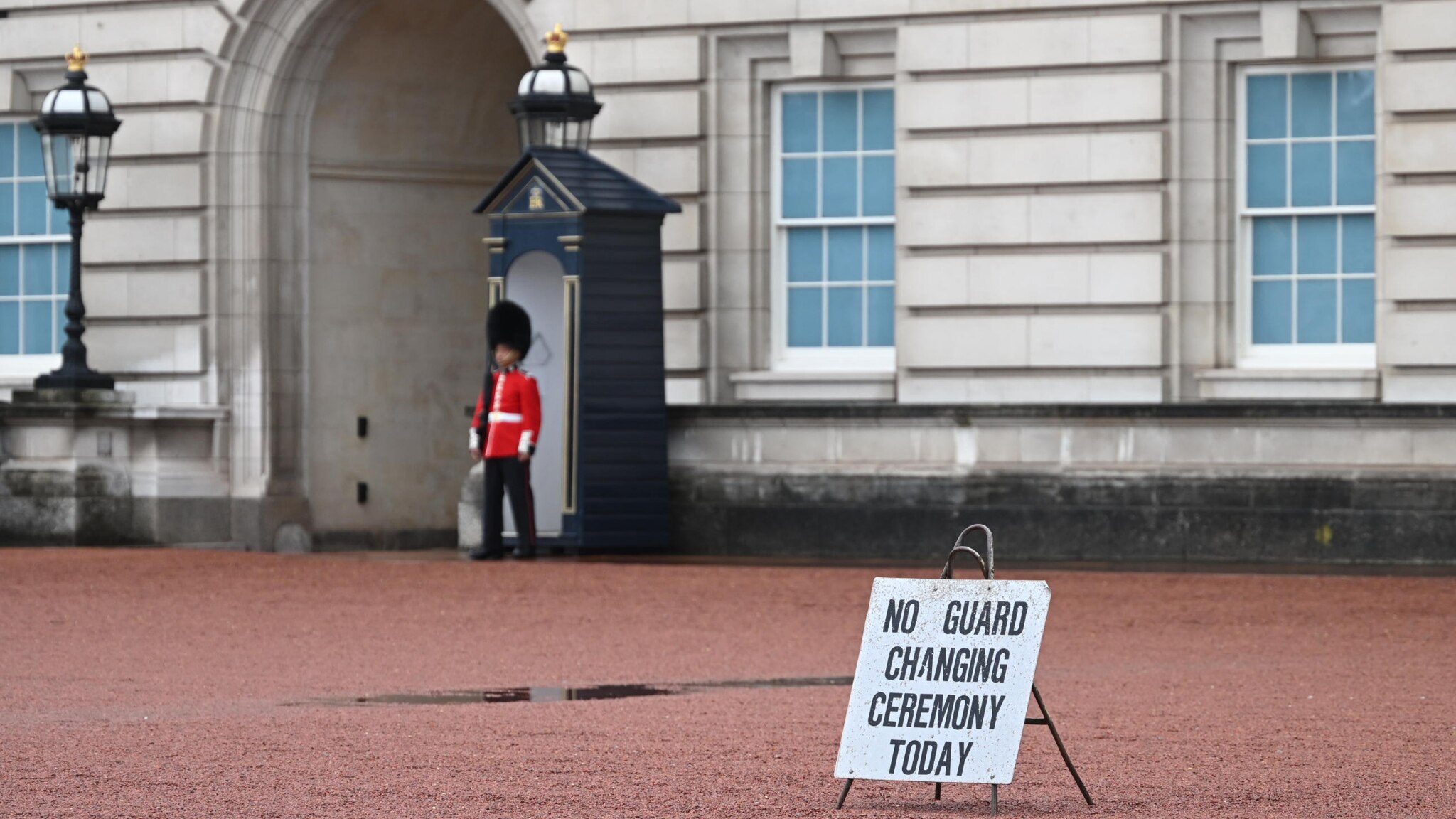A sign hanging on the Buckingham Palace gate reads: "No changing of the guard ceremony today."
This was the first of the signs that the London Bridge operation had taken place.
This is the name of the planning of the details of how the royal family, institutions, diplomats, the military and the BBC must proceed with the death of Queen Elizabeth II.
The code-named plan, dating back to the 1960s, was unveiled in 2017 by the Guardian.
It indicates in detail the measures to be implemented since the monarch's possible illness: in the event of a short course, in the terminal phase it is the personal doctor who has access to his room to draw up the bulletins and keep in touch with the outside world.
"London bridge is down" is the sentence that communicates death and that, after an agitated process that travels on very private telephone lines, leads to the last sign, always hanging from the Buckingham Palace gate: the official announcement of the death of Her Majesty.
The announcement
The Queen's private secretary warns of the Queen's disappearance the first minister Liz Truss then the cabinet secretary and some of the senior ministers and officials.
The premier announces the bereavement to the office of the private council, which coordinates the work of the government on behalf of the monarch.
Subsequently, the Foreign Ministry communicates the news to the governments of the member states of the Commonwealth of Nations.
Internally, the day is called 'D-Day', those after the funeral 'D + 1', 'D + 2' and so on.
The news comes to the press only at a later time, and precisely to the Press Association news agency.
The BBC, with unified networks after stopping any other broadcast, remains tuned to the all news channel to follow the events, the journalists are dressed in black, as a sign of mourning.
In commercial radios, the various speakers are notified of Elizabeth's death with a blue light that flashes intermittently.
At that point they give the line to the radio news and only "harmless music" passes over the stations.
The web and social media listed in mourning
The official website of the Royal Palace shows the news on the front page.
The same happens for all the social media pages of the government departments which also change their profile pictures with their departmental crest.
Parliament meets within an hour to hear the Prime Minister's message to the House of Commons.
Operation "London Bridge" follows those already prepared for George VI (code name was "Hyde Park Corner") and for Queen Mother Elizabeth ("Tay Bridge", later used for Lady Diana).
Although, in this case, the protocol could be changed as the Queen died at Balmoral, the estate in Aberdeenshire in Scotland: codenamed
Operation Unicorn
, never officially confirmed.
The Unicorn operation provides for the immediate suspension of work in the Scottish Parliament, to allow the authorities to prepare for the state funeral.
The body will be exhibited at Holyrood Palace and then at St Giles' Cathedral.
From there the queen's coffin will be loaded onto the royal train at Waverley station and then returned to London.
Carlo immediately King
The 'Spring Tide' operation has also already been prepared, which will regulate the modalities of the accession to the throne of Charles, who will receive a new stick, symbol of legal authority.
The seat cannot be vacant and Charles will be king immediately after his mother's death, even if the official coronation will take place in several months.
The Prince will hold his first meeting with the royal councilors as soon as the funeral ceremonies are over.
The new King's address to the nation will be broadcast at six in the afternoon, after an audience with the Prime Minister.
The Council of Succession meets the day following the death of the sovereign to effectively proclaim the succession of the new monarch, who in this case is Prince Charles.
His proclamation will be read at St. James' Palace and the Royal Exchange in the City of London, then 41 cannon volleys will be fired from Hyde Park.
The parliament itself will meet again in the evening to swear allegiance to the new ruler.
Several floors have also been prepared for moving the coffin.
The Queen passed away in Balmoral, Scotland.
The protocol requires that the coffin be displayed in Edinburgh Cathedral and subsequently transported by the "Royal Train" to Buckingham Palace.
For four days the coffin will be exhibited in the throne room of the palace, before being transported to Westminster Hall and exhibited to the public for four days.
The state funeral, celebrated by the Archbishop of Canterbury, is to be held nine days after the death of the sovereign at Westminster Abbey;
when the body reaches the church the whole country will have to observe silence.
Following the funeral, the body will be transported to Windsor Castle where it will be buried in a pre-made tomb in the Chapel of St. George, where access to the press will be prohibited.
The plan foresees as a last step that the son Carlo drops a handful of earth on the coffin from a silver cup.
GettyImages
Queen Elizabeth, people at Buckingham Palace

